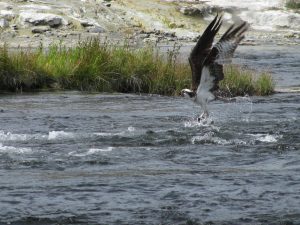
COURSES AT UNIVERSITY OF WASHINGTON
QSCI 381 – Introduction to Probability and Statistics (Spring 2016 – 2021)
Applications to biological and natural resource problems stressing the formulation and interpretation of statistical tests. Random variables, expectations, variances, binomial, hypergeometric, Poisson, normal, chi-square, “t” and “F” distributions.
QSCI/ESRM 451 – Analytical Methods in Wildlife Science (Every Winter)
The purpose of this course is to provide a foundation of techniques commonly used by wildlife biologists in data collection and analysis. The focus will be predominantly on parameter estimation of demographic rates of animal populations. For many students this will be one of your final courses in wildlife biology before you enter the profession or continue your studies in graduate school. In that context, the purpose of the course is to explore, and discuss in detail, quantitative methods needed to address conservation and management problems in the real world.
SEFS/SAFS 557 – Demographic Estimation and Modeling (Even Winters; co-taught with Sarah Converse) The objective of this course is to provide students with a comprehensive practicum for population analysis. The course will introduce students to advanced tools for analysis of populations using capture-recapture and other forms of observational data. We will introduce practical approaches to implementing mark-recapture models and will build up to implementation of integrated population models
SEFS 590 – Bayesian Modeling for Ecologists (W 2017, F 2018)
An introduction to Bayesian statistics including basics of probability and likelihood theory, simple and hierarchical Bayesian models, MCMC, and model checking and inference. Students will learn the foundations of Bayesian statistics and work on building models and analyzing ecological datasets from fisheries and wildlife.
SEFS 521 – Data Integration in Ecology (F 2020) The objective of this course is to discuss current topics in data integration and analysis and to work on a solution for a data integration problem. Data integration, including Integrated Population Models, is increasingly used in ecology and wildlife research. We will read through current papers and work through the methods. All students will participate in a group project to dig deeper into a topic of their choice, practicing coding and model fitting.
QERM 597 – Graduate Seminar (S 2022, 2024) This is a seminar based course where the topics are selected by the students. This course is geared towards graduate students in the Quantitative Ecology and Resource Management degree.

PREVIOUS COURSES AT NCSU
FW 453/553 – Principles of Wildlife Science
Principles and applications of population dynamics and biology to the management of terrestrial vertebrates. Predicting population levels, composition and growth rates with and without management constraints. Strategies for wildlife conservation, utilization, and enhancement. Laboratories stress the collection and analysis of data, and focus on learning to analyze data using R, a powerful programming language. This course is taught every year in the spring.
ST 506 – Sampling Animal Populations; Co-taught with Ken Pollock
Statistical methods applicable to sampling of wildlife populations, including capture-recapture, removal, change in ratio, quadrant and line transect sampling. In addition to an emphasis on model assumptions and study design, we focus on data analysis in Program MARK and R. Students complete a research project based on their own data and/or research needs. This course is currently being taught (Fall 2015).
FW 595 – Introduction to Models for Binary Data in Ecology
This graduate level course will provide an introduction to model building based on binary data. The first part of the class will review (generalized) linear (mixed) models and their use in ecology. We will then explore more advanced hierarchical models for occupancy including dynamic and community based models. The class will cover some theory but will primarily focus on practical applications including model development and analysis using the programs R and JAGS.